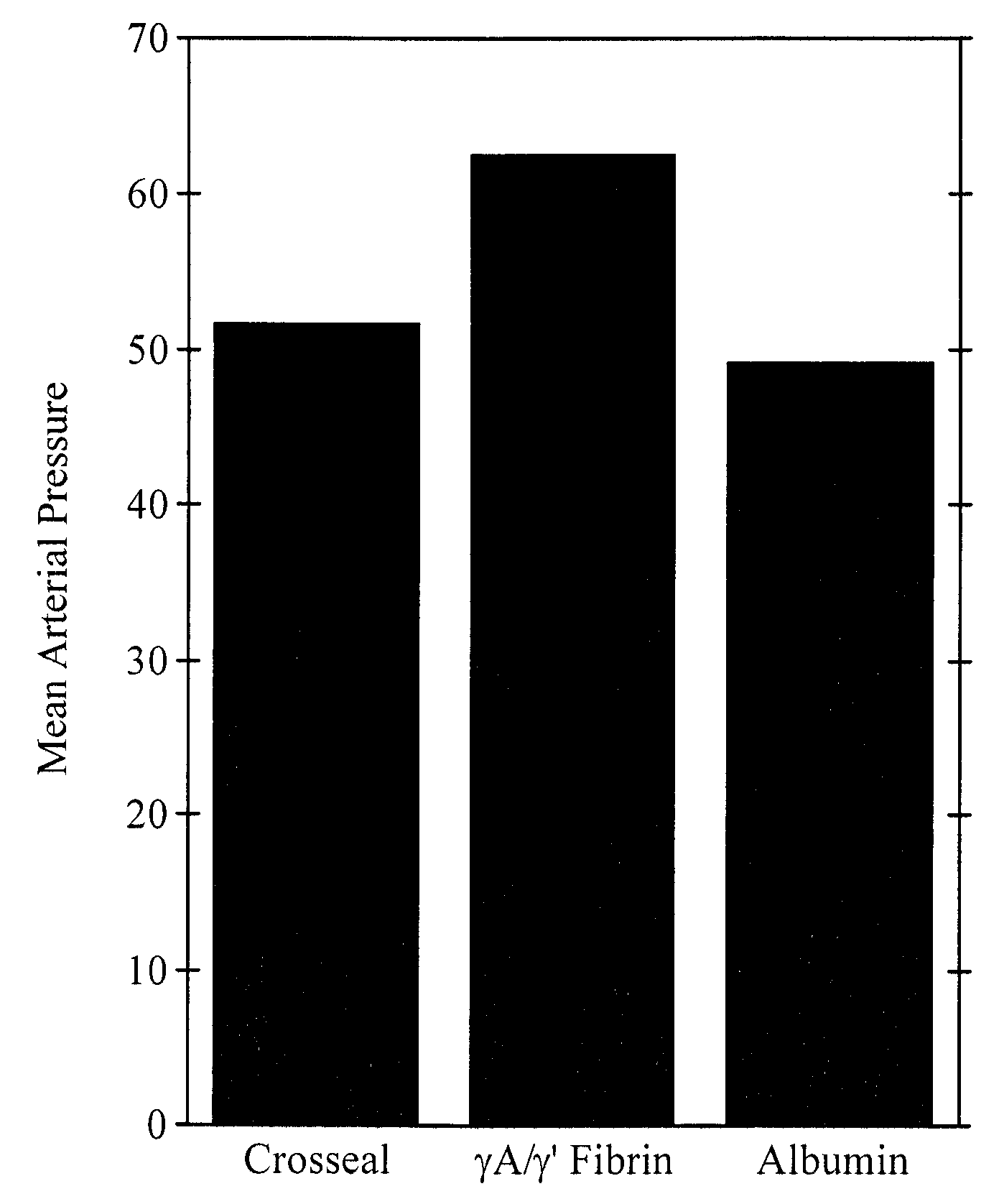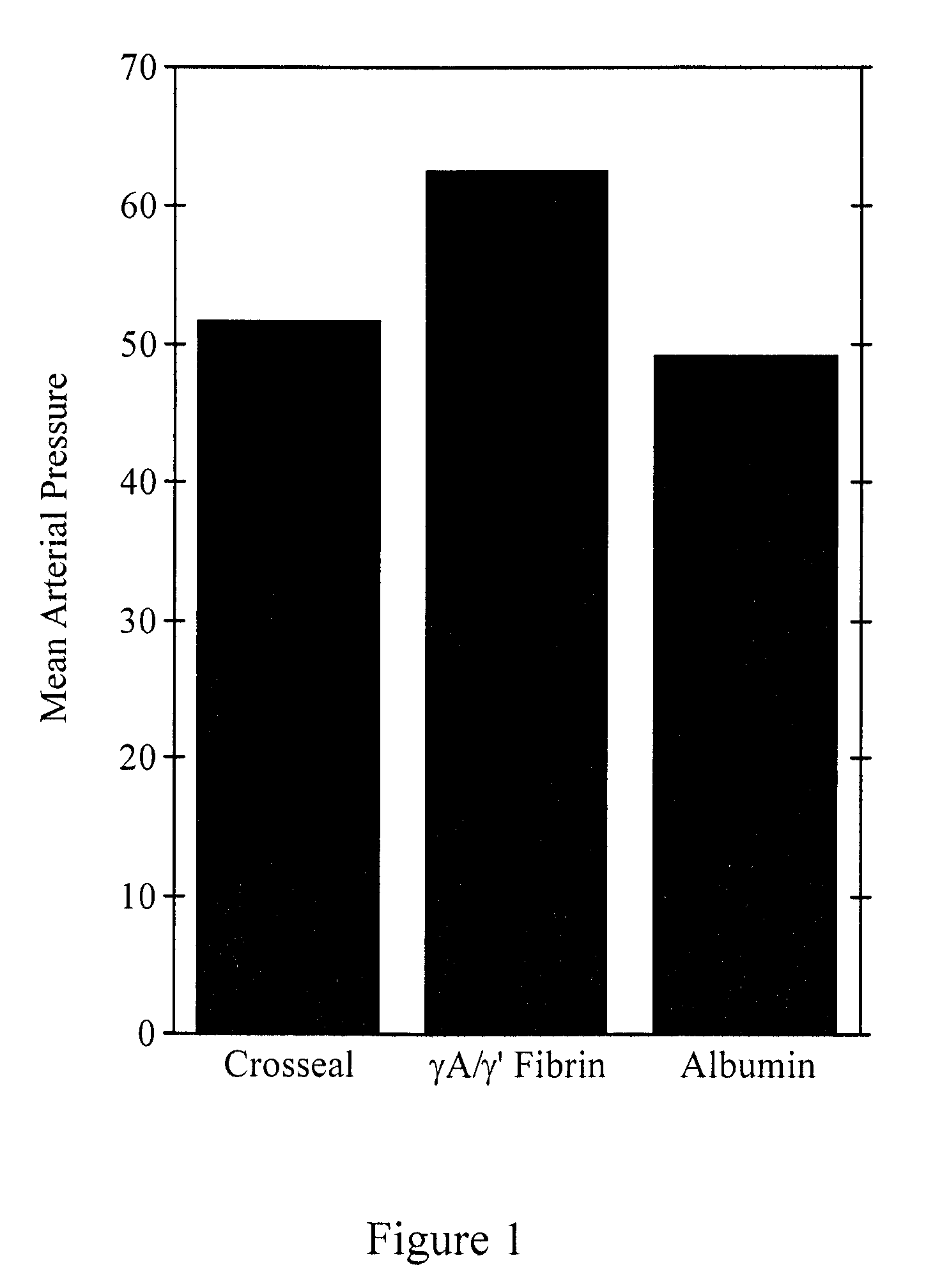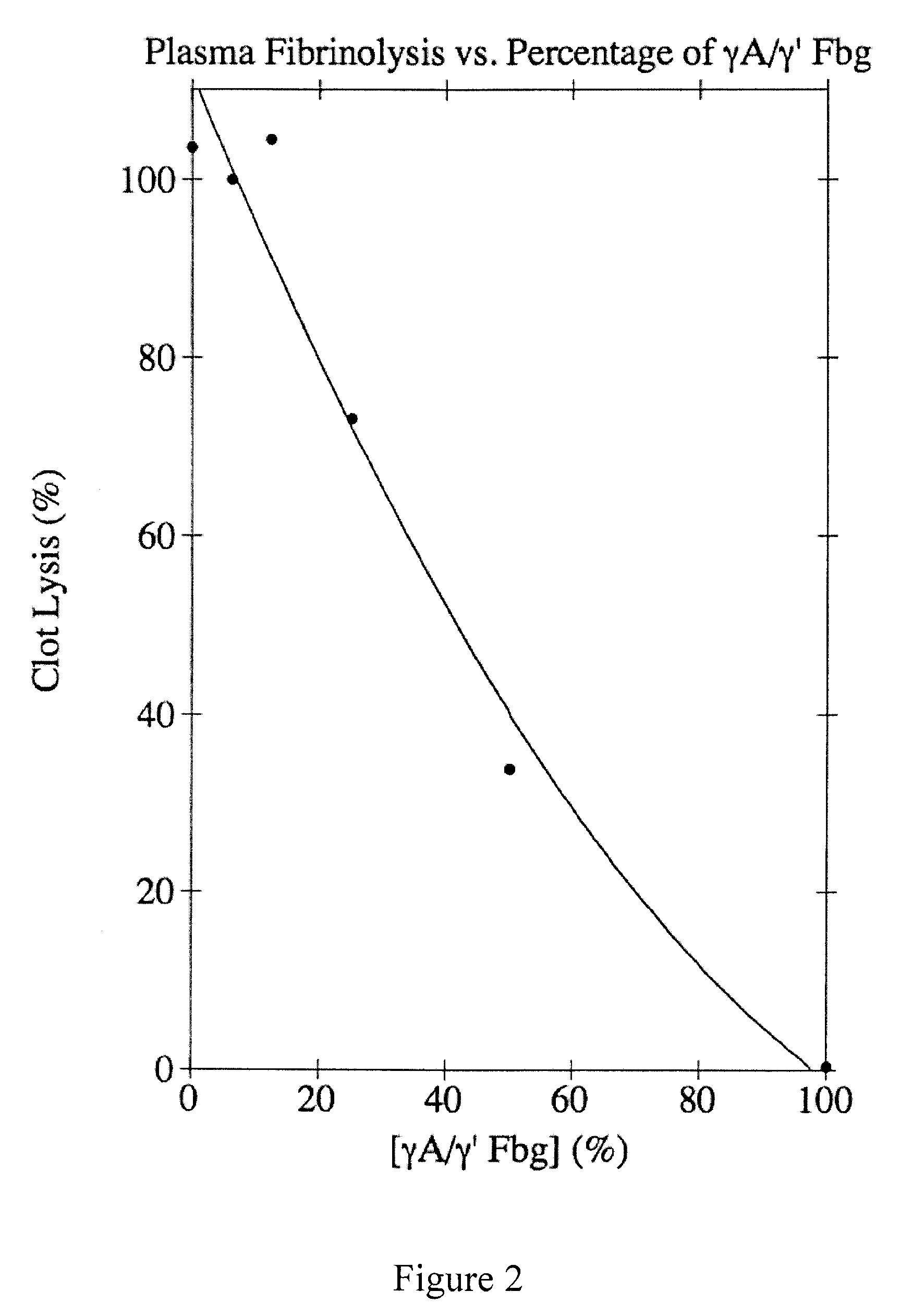Degradation-resistant fibrinogen sealants
a technology of fibrinogen sealants and degradation resistance, which is applied in the field of wound treatment, can solve problems such as re-bleeding of wounds
- Summary
- Abstract
- Description
- Claims
- Application Information
AI Technical Summary
Benefits of technology
Problems solved by technology
Method used
Image
Examples
example 1
Purification of γA / γ′ and γA / γA Fibrinogen
[0074]Plasminogen-free human plasma fibrinogen (Calbiochem) was dissolved in 39 mM Tris-PO4, pH 8.6, containing 5 mM 6-aminocaproic acid (EACA) and 0.2 mM phenylmethylsulfonyl fluoride (PMSF) and dialyzed into the same buffer at 4° C. Insoluble residue was removed by centrifugation at 10,000×g for 30 min at 4° C. The γA / γ′ and γA / γA forms of fibrinogen were separated using DEAE-cellulose (Finlayson et al., (1960) J. Clin. Invest. 39:1837-1840). Briefly, the fibrinogen solution was adsorbed to a column of DEAE-cellulose (6×20 cm) and eluted with a 1200-ml exponential gradient generated in a 600-ml constant volume mixing chamber from the starting buffer (39 mM Tris-PO4, pH 8.6; 5 mM EACA; and 0.2 mM PMSF) to the final buffer (193 mM Tris-PO4, pH 4.6; 5 mM EACA; and 0.2 mM PMSF). The absorbance was monitored at 280 nm, and 11-ml fractions were collected. The elution profile showed two peaks; γA / γA fibrinogen composed the first peak and γA / γ′ fi...
example 2
Preparation of a γA / y° Fibrin Sealant
[0076]A first solution containing γA / γ′ fibrinogen may be prepared from γA / γ′ fibrinogen purified as described in Example 1. The γA / γ′ fibrinogen may be treated with aluminum hydroxide gel to adsorb the Vitamin K dependent clotting factors. The γA / γ′ fibrinogen may additionally or alternatively be incubated with a solvent detergent (SD) mixture consisting of 1% tri-n-butyl phosphate and 1% Triton X-100 for inactivation of enveloped viruses. The solvent detergent reagents may then be removed by castor oil extraction and reverse phase chromatography, for example a C-18 column, and the preparation may be treated by pasteurization.
[0077]Prior to pasteurization, sucrose (1.8 g / g column filtrate) and glycine (0.11 g / g) are added as stabilizers and the mixture is warmed to 37° C. under stirring. The pH is adjusted to 6.8-7.4. The solution is heated to 60°±0.5° C. and maintained at that temperature for 10 hours.
[0078]After pasteurization, the stabilizers...
example 3
Swine Injury Model to Evaluate γA / γ′ Fibrinogen Sealant
[0081]Degradation-resistant γA / γ′ and γA / γA fibrinogen sealants were tested in a randomized prospective, blinded study comparing blood loss after an aortic injury in pigs receiving three different treatments—either standard CROSSEAL™ fibrin sealants (positive control), γA / γ′ fibrinogen sealants, or albumin (negative control). The aortic injury model produces reproducible clot failure following aortic injury.
[0082]A hole was made in the aorta of pigs with a 2.0 mm skin biopsy punch. The punch was removed and bleeding was initiated. After a 15 minute initial hemorrhage, animals were assigned randomly to a fibrinogen sealant treatment group—CROSSEAL™, degradation-resistant γA / γ′ fibrinogen sealants, or albumin control. One of the two types of fibrinogen sealants or albumin was sprayed on the aortic wound using a CROSSEAL™ fibrin applicator (American Red Cross). The investigators were blinded as to the identity of the sealant. A gau...
PUM
| Property | Measurement | Unit |
|---|---|---|
| concentration | aaaaa | aaaaa |
| concentration | aaaaa | aaaaa |
| concentration | aaaaa | aaaaa |
Abstract
Description
Claims
Application Information
 Login to View More
Login to View More - R&D
- Intellectual Property
- Life Sciences
- Materials
- Tech Scout
- Unparalleled Data Quality
- Higher Quality Content
- 60% Fewer Hallucinations
Browse by: Latest US Patents, China's latest patents, Technical Efficacy Thesaurus, Application Domain, Technology Topic, Popular Technical Reports.
© 2025 PatSnap. All rights reserved.Legal|Privacy policy|Modern Slavery Act Transparency Statement|Sitemap|About US| Contact US: help@patsnap.com



